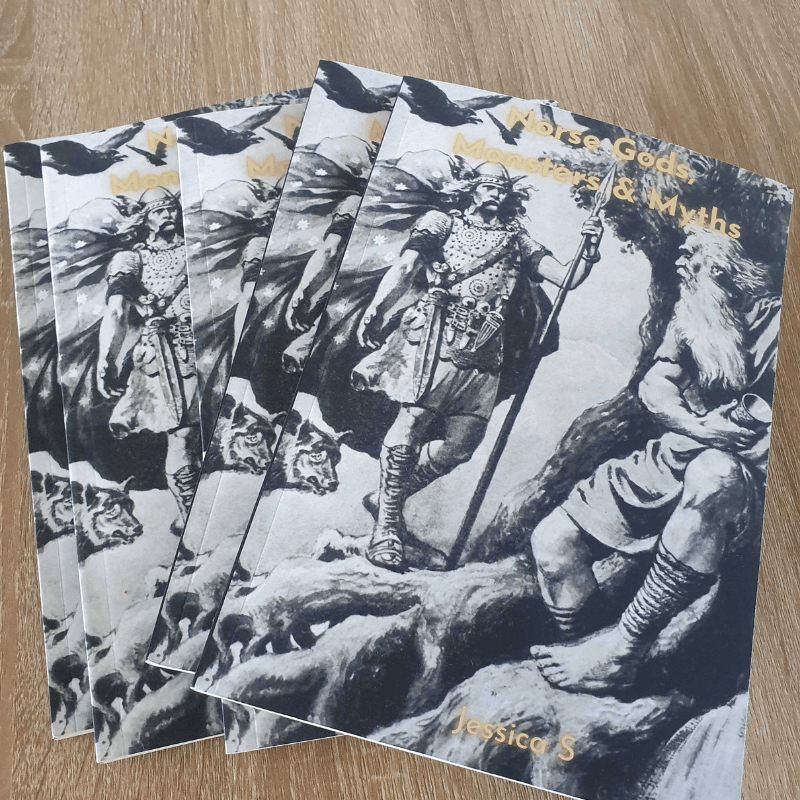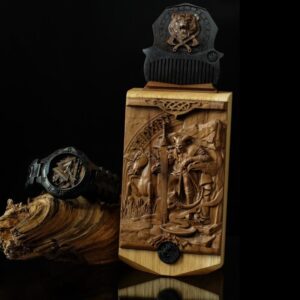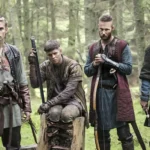One of the most famous mortal characters from Norse myth and legend is Sigurd, also sometimes called Sigfried, who had a love affair with a Valkyrie, slew the dragon Fafnir, and died in unfortunate circumstances after acquiring a cursed ring.
Sigurd’s story appears in many sources, both Germanic and Norse.
Most fascinatingly, his story is recorded on a series of runestone carvings from Sweden made during the 11th century.
This confirms that Sigurd’s was an old and famous story even in Viking times.
Because there are so many different versions of Sigurd’s story, there are also many inconsistencies.
Below is a summary of his life, based on the written sources and the Sigurd Stones.
The Sigurd Stones
The Sigurd Runestones are nine runestones found across Sweden.
They appear to depict the story of Sigurd, and date back to the 10th century.
They are related to several other carved stones found in Britain that seem to have been influenced by Scandinavian settlers in the late 10th century.
The runestones seem to show scenes from Sigurd’s story.
The image at the top of this article is a drawing of the image on the Ramsund Runestone, showing several scenes from Sigurd’s adventures.
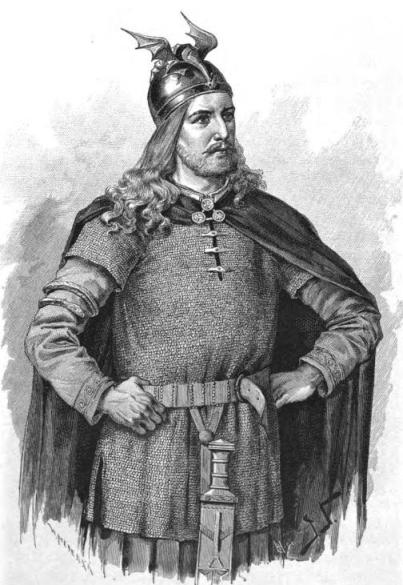
Despite his popularity, Sigurd cannot be identified as a real person in the historical record.
Theories suggest that he was one of the Merovingian (500-750) kings of the Franks who was married to Brunhilda of Austrasia or that he was inspired by the German hero Arminius, who defeated the Romans in the Teutoburg Forest in 9 CE.
But there is no firm evidence, and he may simply be a mythological figure.
Sigurd’s Youth
According to German accounts, Sigurd was either a prince who grew up at court or a wandering warrior who made his own fortune.
In one version, he is a prince whose pregnant mother was thrown from the castle because of assumed infidelity.
She gave birth to Sigurd, and he was suckled by a female deer until he was found by a smith called Mimir.
The smith sends him off to slay a dragon in the hope that he will die because he is too difficult to raise, but instead, Sigurd slays the dragon.
In the Norse versions, he was a prince who was raised at court, or who was too troublesome, so he was sent away to be raised by a smith called Regin.
He is sometimes the posthumous son of King Sigmund.
In most cases, Regin makes a sword for Sigurd called Gram, which he uses to avenge his father’s death, sometimes with the help of Odin.
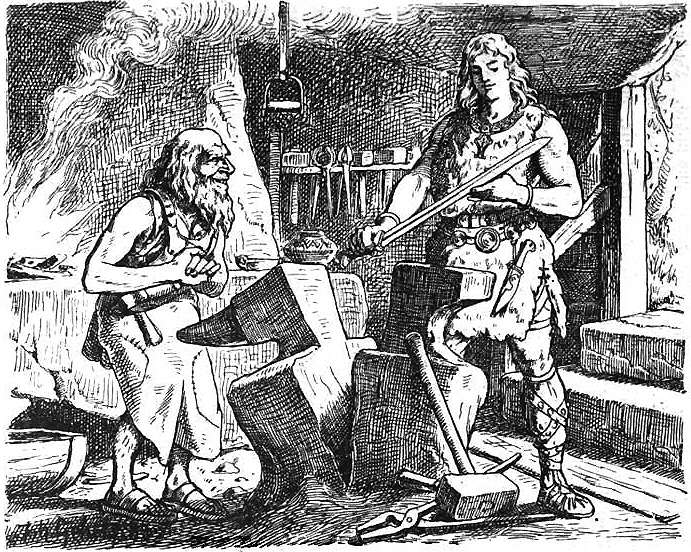
In almost all versions, Sigurd has royal blood, but life circumstances mean that he lives the life of a wandering warrior.
He also has various special attributes gained by (1) bathing in the blood of a dragon to make his skin invulnerable, (2) gaining a cloak of invisibility that also increases his strength twelve-fold, (3) winning the incredible sword Gram/Balmung, and (4) becoming rich by finding a hoard of treasure.
Mythological Setting
There are also several versions of the Dragon Slayer story, but the most famous Norse version from the Volsunga saga starts with a mythological setting.
It starts with Odin, Loki, and Hoener going to visit a dwarf king Hreidmar.
On the journey, they see a magnificent otter and slay it for its pelt, which they present to the king as a gift.
But this upsets him, as the pelt belongs to his son Otr, who could shapeshift into an otter.
The gods must pay for the slaying by covering the pelt in gold.
Loki remembers seeing a fish guarding a magnificent treasure on their journey, and he returns to retrieve it.
The fish is also a dwarf, Anvari, who can shapeshift into a fish, which he does to protect the treasure that he hides in a lake.
When Loki comes to take the treasure, he begs him not to or at least leave him his magnificent ring, Anvaranaut.
Loki refuses and takes everything, leading Anvari to curse whoever owns the ring.
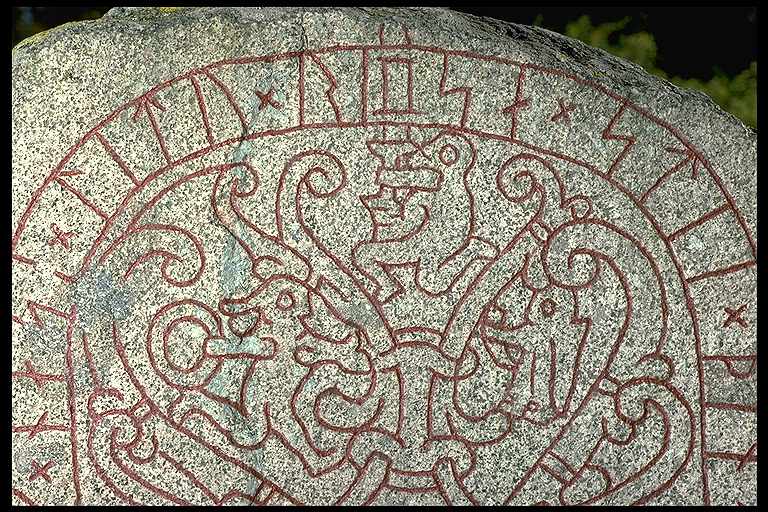
The ring is given to Hreidmar, who is immediately affected by the curse and becomes possessive of his new gold hoard, especially the ring.
This eventually leads to problems with his two sons, Fafnir and Regin, who are also affected by the ring and are angered when their father will not share the treasure with them.
Fafnir eventually turns himself into a dragon, killing his father and driving off his brother, and then remaining in his dragon form to covetously protect his treasure.

Dragon Slayer
With the scene set, Sigurd is sent to slay the dragon. In the Volsunga saga, Regin asks Sigurd to kill Fafnir to reclaim the treasure, which he says is rightfully his.
In addition to retrieving the ring, Regin asks Sigurd to retrieve the dragon’s heart, which he intends to eat for mystical purposes.
To manage the slaying, Sigurd digs a pit that he hides in and then stabs the dragon as he passes over.
Somehow, he ingests some of the dragon’s blood.
A common suggestion is that he got blood on his fingers when removing or cooking the heart, and when he put his fingers in his mouth, he consumed the blood.
This gives him the ability to speak to birds, and they warn him that Regin plans to kill him and keep all the dragon’s treasure for himself.
So, when Sigurd returns home, he kills Regin before Regin can kill him.
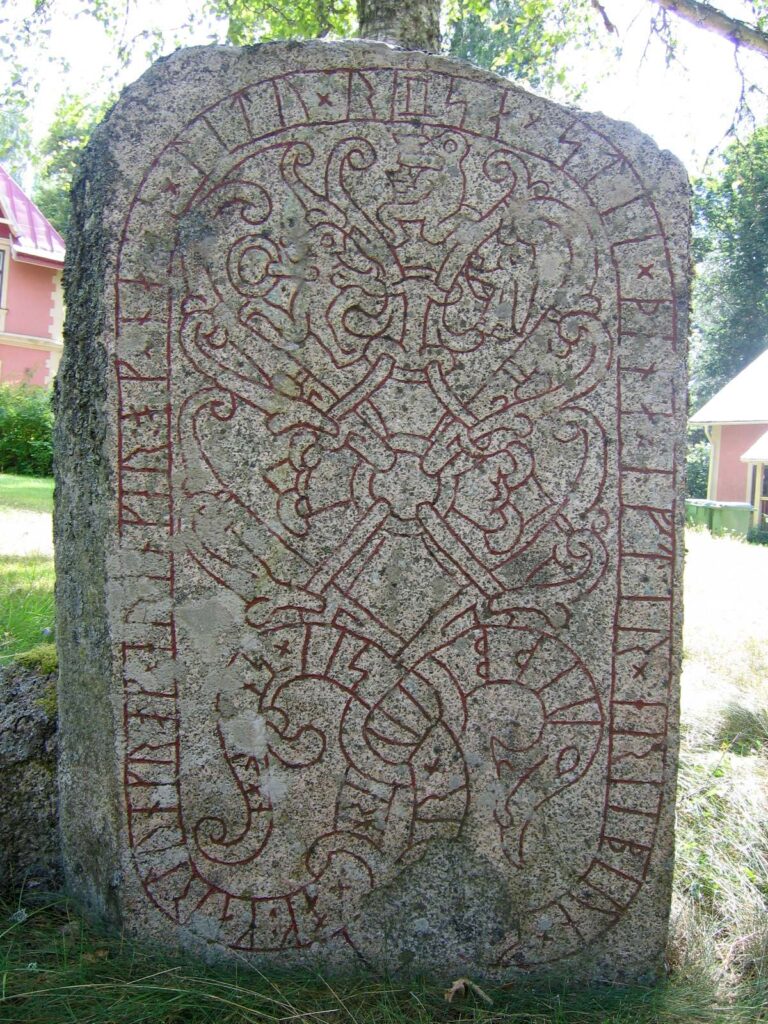
Meeting Brunhild
Several stories suggest that Sigurd met Brunhild early in his career.
German versions suggest that she was an Icelandic princess who helped him in some way.
The Norse stories make her a Valkyrie.
Odin was angry at her for making the wrong side win a battle, so he cursed her to marry a mortal man.
While she accepts her fate, she says that she will only marry the man brave enough to pass through a ring of fire and find her where she is sleeping.
When Sigurd hears of this challenge, he is not afraid to take it on, and he passes through the ring of fire and awakes Brunhild from her long sleep by cutting off the Valkyrie armor that has become part of her skin.
The two quickly fall for one another, and she may teach him things, like the secrets of the runes.
While they may make promises to one another, they don’t marry, as Sigurd must leave to complete other tasks.
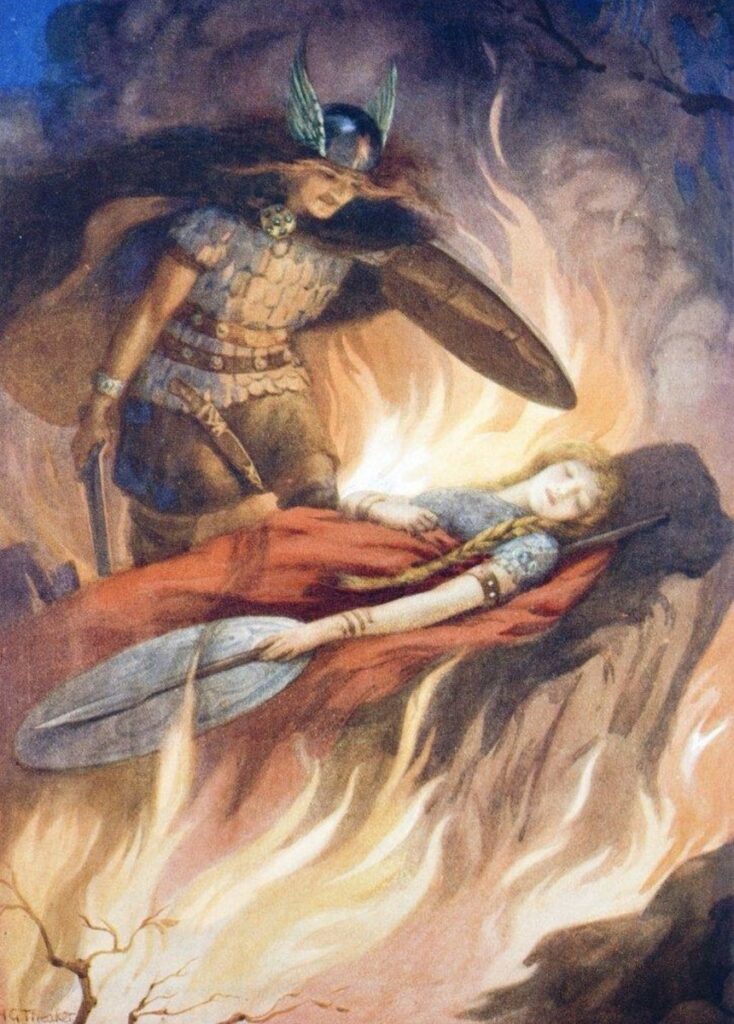
Some versions suggest that the two slept together during this time, and then the stories of Ragnar Lodbrok claim that his wife Aslaug was the daughter of Sigurd and Brunhild from this encounter.
Marriage and Betrayal
In the various versions, Sigurd may have never met Brunhild, never promised her anything, or was given poison to forget about her.
Whatever the case, he meets a princess called Gudrun (or Grimhild/Kriemhild) and falls for her.
His friend and her brother King Gunnar agrees to let him marry her if he helps him woo Brunhild.

Whether this Brunhild is the Icelandic princess or the mighty Valkyrie, Sigurd takes Gunnar’s place to complete tasks of strength, skill, and bravery to win Brunhild’s hand for his friend.
In the Volsunga saga, Sigurd marries Brunhild as Gunnar and spends one night with her in her hidden place, but they sleep with a sword between them.
The marriage is only consummated when they return to Gunnar’s kingdom and the two return to their own bodies.
In one German version, the Icelandic Brunhild does not want to consummate the marriage with Gunnar, so Sigurd enters their room in his invisibility cloak and holds her down so that Gunnar can consummate the union.
Death of Sigurd
Usually, due to an argument between the two women, Sigurd’s wife Gudrun reveals to Brunhild everything that happened which led to her marrying Gunnar, against her will.
This angers Brunhild, who organizes to have Sigurd killed, either while he is bathing in a lake or in his bedroom.
She learns where he is vulnerable and has her husband or one of his men kill Sigurd.
But once the deed is done, she is overcome with grief for her lost love and throws herself on his funeral pyre.
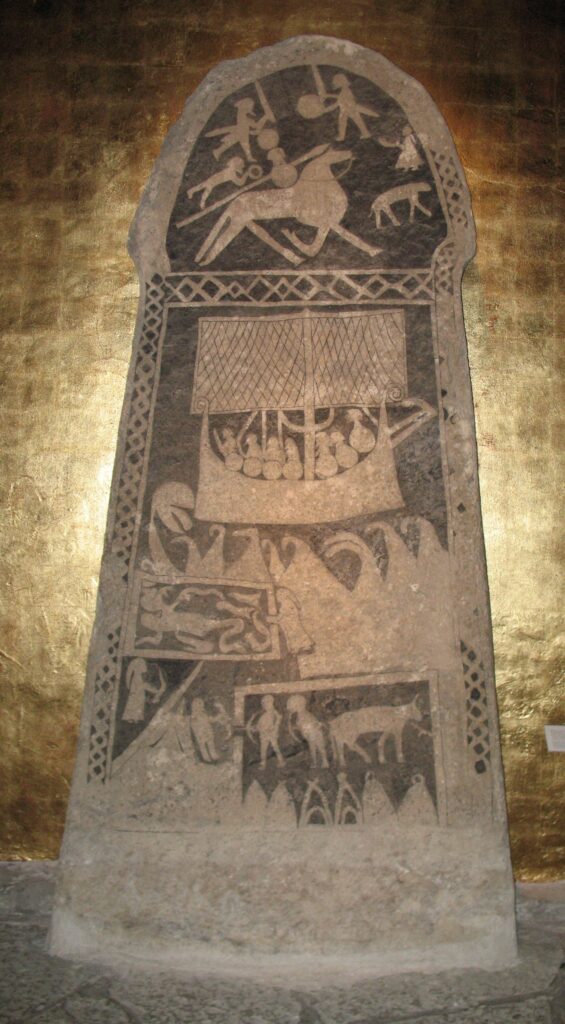
Later, Gudrun remarries a man called Atli, and invites her brother to visit, with the intention of killing him for his role in Sigurd’s death.
Atli agrees, because he desires the treasure that Sigurd took from Fafnir, and Gunnar took from Sigurd.
Not long after he arrives, Gunnar is taken captive and thrown into a snake pit.
He plays an instrument to lull the snake to sleep, but he still eventually dies of snake bites, just like Ragnar Lodbrok.
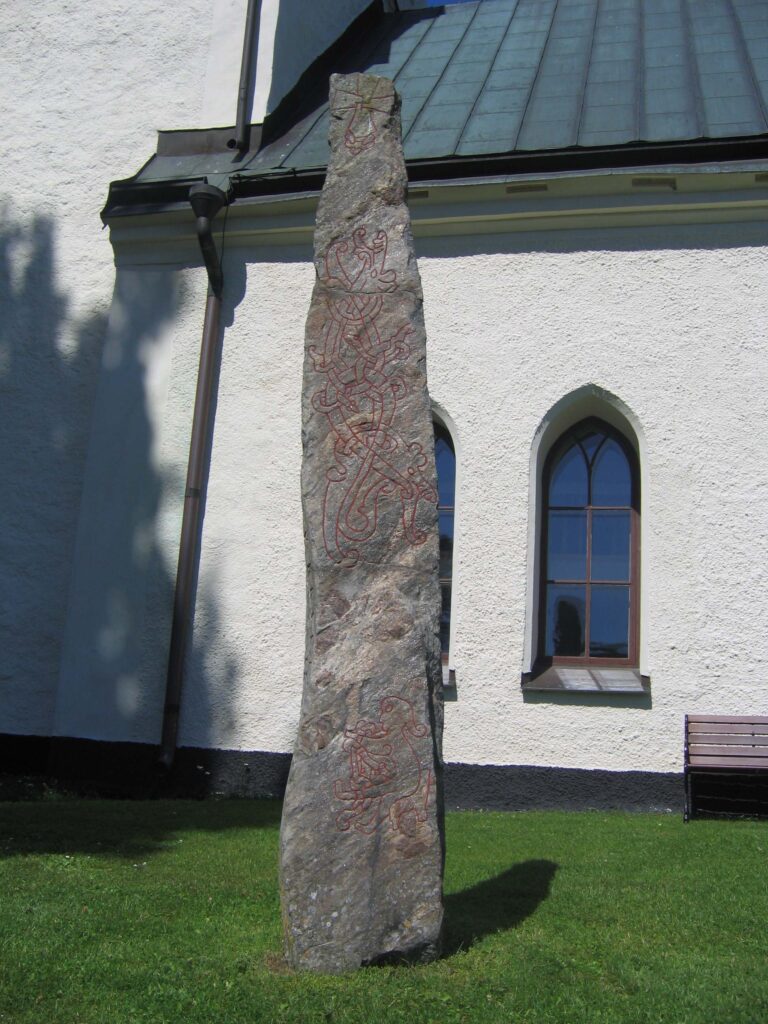
Therefore, the curse of the ring may have played out, leading to the deaths of Hreidmar, Fafnir, Regin, Sigurd, Brunhild, and Gunnar.


